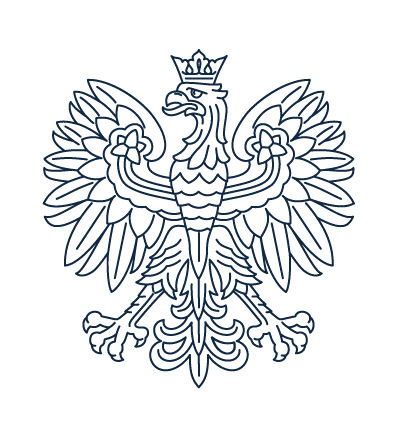DETAILED PROGRAMME REQUIREMENTS
JAZZ AND IMPROVISED MUSIC
first-cycle degree
Candidates for the first-cycle degree program are required to have knowledge of music theory and workshop skills at the level of a completed secondary music school.
A two-stage examination – the candidates who will have passed the first stage are admitted to the second stage.
For jazz instrumental majors:
Stage 1:
Major exam
an examination in playing an instrument – practical (jazz repertoire should be performed from memory)
Supplementary exam
an interview – oral examination
Candidates may perform with the accompaniment of their own rhythm section or the rhythm section of the Krzysztof Penderecki Academy of Music in Krakow, after prior provision of sheet music materials.
Stage 2:
Supplementary exams (apply to all instrumental majors)
• sight-reading – a practical examination
• a quick study examination (self-preparation of a provided piece of music – individual work) – practical
• an ear training – an oral examination
For jazz arranging and composition major:
Stage 1:
Major exam
Presentation of composition and arranging abilities – oral exam
Supplementary exam
Interview – oral exam
Stage 2:
Supplementary exams (apply to jazz arranging and composition major)
• Ear training – oral exam
• Playing the piano (if jazz piano is not the primary instrument): playing a chosen jazz piece with solo improvisation or accompanied by a rhythm section
• Harmony – practical exam
Candidates may perform with the accompaniment of their own rhythm section or the rhythm section of the Krzysztof Penderecki Academy of Music in Krakow, after prior provision of sheet music materials.
Detailed programmes of practical exams
for instrumental majors:
Playing the piano
• Performance of a piece (significant form*) from the classical piano literature at the secondary music school level;
• Performance of three diverse pieces in a jazz style with an improvised solo, including: one blues piece, one ballad (up to 80 bpm), and one fast or medium-tempo piece in any jazz style.
All pieces of the jazz part should be performed with rhythm section accompaniment; and two of three should be published jazz standards.
* significant form – for example a sonata, a concerto (or a movement), a scherzo, a ballad or similar, or a cycle of small forms (a few preludes, Bach’s inventions, etc.).
Playing the double bass
• Performance of three pieces in a jazz style with an improvised solo, including: one blues piece, one ballad (up to 80 bpm), and one fast or medium-tempo piece in any jazz style.
All pieces in the jazz part should be performed with the rhythm section accompaniment, and two of them should be published standards.
Playing the flute
• Performance of a piece from the classical music literature such as: part of a concerto or sonata, or one etude from any of the booklet “Selection of Etudes forFlute” by Felix Tomaszewski. The piece from the classical literature should expose the candidate’s technical skills and musicality;
• Performance of three pieces in a jazz style with an improvised solo, including: one blues piece, one ballad (up to 80 bpm), and one fast or medium-tempo piece in any jazz style.
All pieces in the jazz part should be performed with the rhythm section accompaniment, and two of them should be published standards.
Playing the trumpet
• Performance of one of Arban Characteristic Studies etudes (No. 1 or No. 6) at a tempo no slower than 60 bpm;
• Performance of three pieces in a jazz style with an improvised solo, including: one blues piece, one ballad (up to 80 bpm), and one fast or medium-tempo piece in any jazz style.
All pieces in the jazz part should be performed with the rhythm section accompaniment, and two of them should be published standards.
Playing the saxophone
• Performance of three pieces in a jazz style with an improvised solo: one blues piece, one ballad (up to 80 bpm), and one fast or medium-tempo piece in any jazz style.
All pieces in the jazz part should be performed with the rhythm section accompaniment, and two of them should be published standards.
Playing the trombone
• Performance of two etudes of diverse tempo and character from the book of etudes – Melodious Etudes for Trombone – Joannes Rochut (part 1);
• Performance of three pieces in a jazz style with an improvised solo, including: one blues piece, one ballad (up to 80 bpm), and one fast or medium-tempo piece in any jazz style.
All pieces in the jazz part should be performed with the rhythm section accompaniment, and two of them should be published standards.
Playing the percussion and percussion instruments
• Performance of two pieces or snare drum etudes in different styles (classical and rudimental);
• Performance of three pieces in a jazz style with an improvised solo, including: one blues piece, one ballad (up to 80 bpm), and one fast or medium-tempo piece in any jazz style.
All pieces in the jazz part should be performed with the rhythm section accompaniment, and two of them should be published standards.
Playing the guitar
• Performance of three diverse pieces in a jazz style with an improvised solo, including: one blues piece, one ballad (up to 80 bpm), and one fast or medium-tempo piece in any jazz style.
All pieces in the jazz part should be performed with the rhythm section accompaniment, and two of them should be published standards.
At least one piece must be performed in a trio with percussion and double bass without an additional harmonic instrument (piano).
Playing the bass guitar
• Performance of three pieces in a jazz style with an improvised solo, including: one blues piece, one ballad (up to 80 bpm), and one fast or medium-tempo piece in any jazz style.
All pieces in the jazz part should be performed with the rhythm section accompaniment, and two of them should be published standards.
Playing the violin
• A free-choice piece from classical literature;
• Performance of three pieces in a jazz style with an improvised solo, including: one blues piece, one ballad (up to 80 bpm), and one fast or medium-tempo piece in any jazz style.
All pieces in the jazz part should be performed with the rhythm section accompaniment, and two of them should be published standards.
Detailed programme of practical exams
for Jazz arranging and composition:
Stage 1.
• Presentation of three pieces, including:
– two own arrangements
– one own composition for any instrumental ensemble.
Arrangements should have a character referring to the jazz style, one of which should be an arrangement of a jazz standard for an ensemble with a rhythm section and the minimum of 4 wind instruments. It can also be an arrangement for big band. The other should be an arrangement for an ensemble with a rhythm section and the minimum of any 3 chosen instruments (human voice included).
The pieces should last at least 3 minutes.
The pieces should be in the format of a full score (each instrument on its own staff) in a PDF file. In addition, an extract of the score (also PDF) should be included. It is recommended to bring printed pieces to the exam.
For each piece a recording in mp3 format (either performed live or as a computer simulation) should be attached.
• Playing a primary instrument: performance of a selected jazz piece with improvisation, accompanied by a rhythm section;
• Interview – oral examination with elements of knowledge of music theory.
Stage 2.
• Ear training: melodic-rhythmic-harmonic exercises
• Playing the piano (if piano is not the primary instrument): performance of a selected jazz piece with improvisation solo or accompanied by a rhythm section
• Harmony: realization of the given harmonic course on the piano and realization of modulations and other chord combinations






